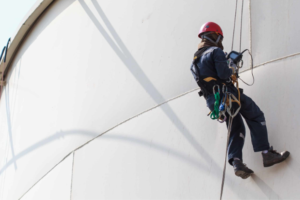
Slow pitch jigging has revolutionized bottom fishing, offering an effective and highly engaging method to target a wide variety of predatory fish.
Unlike traditional jigging, which relies on aggressive jerks and retrieves, slow pitch jigging emphasizes a more nuanced, rhythmic presentation that entices even finicky fish.
As this technique gains popularity, so does the array of specialized gear available. To truly unlock its potential and enhance your fishing experience, understanding the critical factors when selecting your slow pitch jigging gear is paramount.
Rod Action and Length
The heart of any slow pitch jigging setup is the rod. Unlike conventional jigging rods, slow pitch rods are designed with a parabolic, slow-taper action that allows the rod tip to “spring back” after a lift, imparting a natural fluttering action to the jig.
Look for rods specifically labeled for slow pitch jigging, often rated by jig weight (e.g., PE 1-3, 200g). Length is also crucial; shorter rods (typically 6 to 7 feet) offer better control for imparting the jig’s action, especially in deeper water. The unique action of the rod is central to effective slow pitch jigging.
Reel Type and Gear Ratio
For slow pitch jigging, both conventional (overhead) and spinning reels can be used, but conventional reels are often preferred for their direct feel and ease of managing line depth. Look for a reel with a high retrieve rate (high gear ratio) but also sufficient torque to fight larger fish.
A smooth, powerful drag system is non-negotiable, as you’ll often be using lighter lines and need to lean on the drag. The reel’s capacity should match your target depth and line type. A balanced reel complements the delicate action required for slow pitch jigging.
Line Selection: Braided and Leader
Braided line is essential for slow pitch jigging due to its zero-stretch properties, which transmit every subtle movement to the jig and every tap from a fish to the angler.
Opt for a thin, strong braided line with a high breaking strain relative to its diameter, often rated in PE (Polyethylene) sizes. A fluorocarbon leader, typically 10 to 20 feet long, is tied to the braid.
The leader provides abrasion resistance, invisibility in the water, and acts as a shock absorber. Matching your line to your rod and reel is key for optimal slow pitch jigging performance.
Jig Weight and Design
The “slow pitch” jig itself is a specialized lure. These jigs are typically center-weighted, asymmetrical, and designed to flutter, slide, and dart on the fall rather than dropping straight down. Selecting the correct jig weight depends on factors like water depth, current strength, and target species.
Having a range of weights and designs (e.g., long, short, wide) is beneficial. Experiment with different colors and glow patterns based on water clarity and time of day. The unique design of the jig is what truly defines slow pitch jigging.
Terminal Tackle and Accessories
Don’t overlook the importance of quality terminal tackle. Heavy-duty split rings, solid rings, and assist hooks are vital components. Assist hooks, attached to the jig, are designed to maximize hook-up ratios, especially with the delicate bites often associated with this technique.
Consider the size and strength of your assist hooks relative to your target species. Other useful accessories include a jig bag for organization, a quality line cutter, and a pair of long-nose pliers for hook removal.






